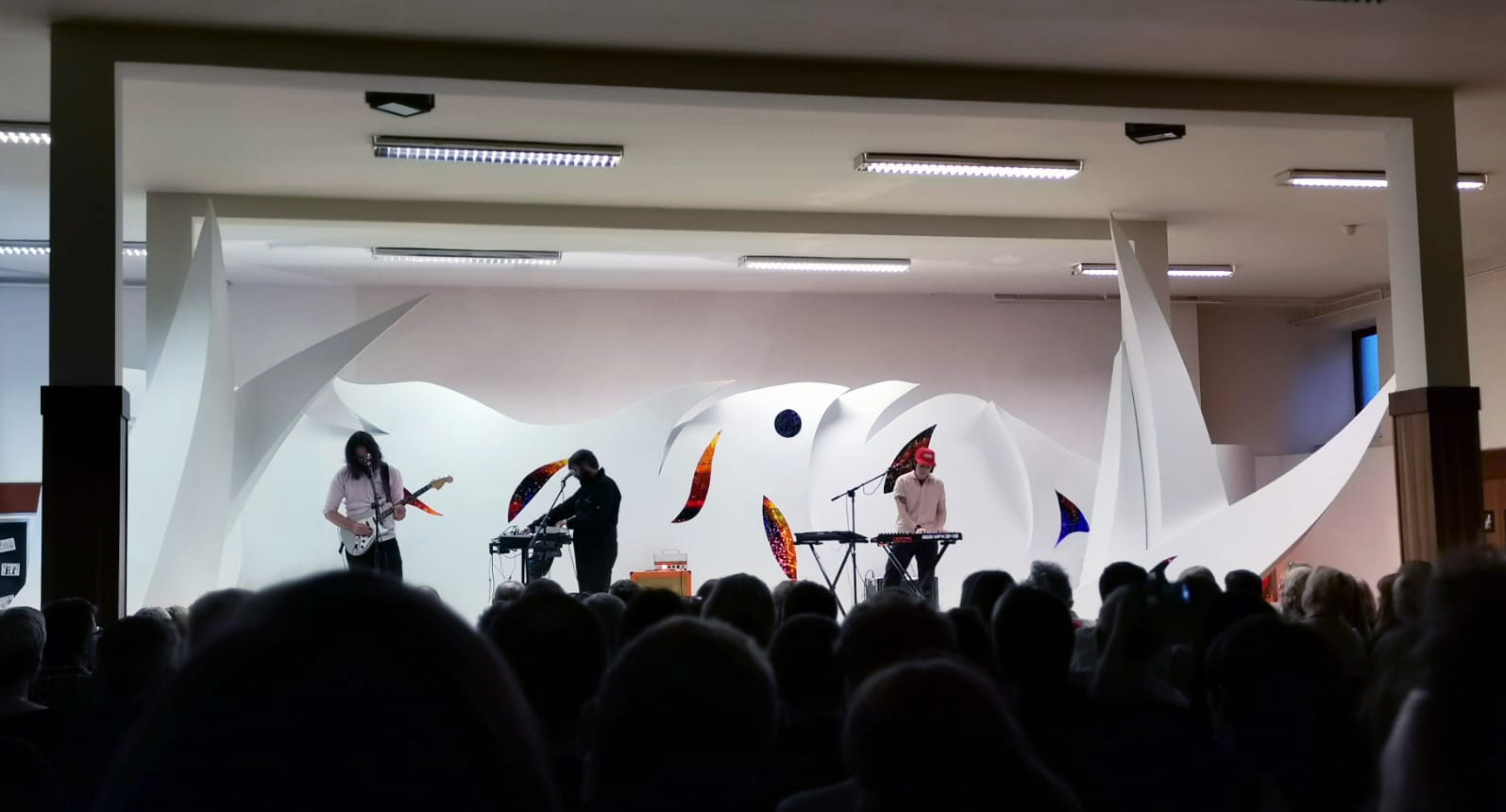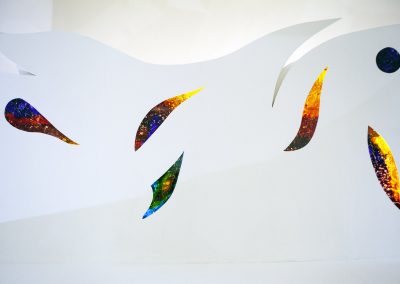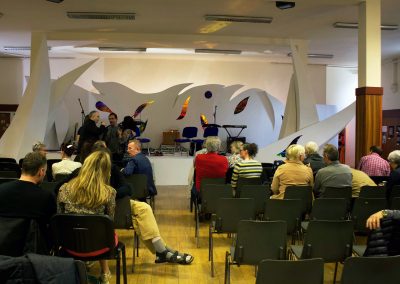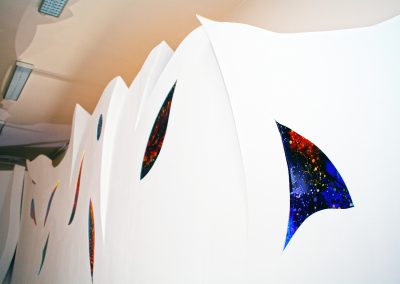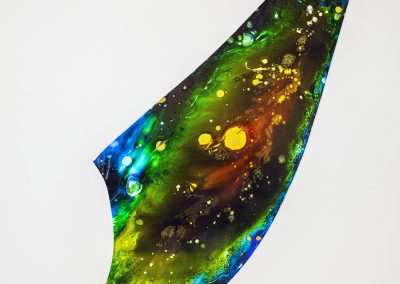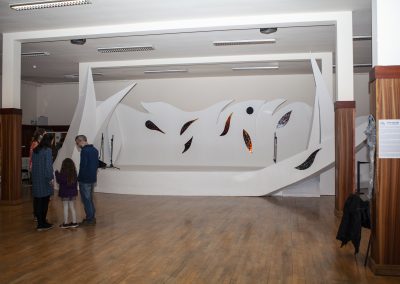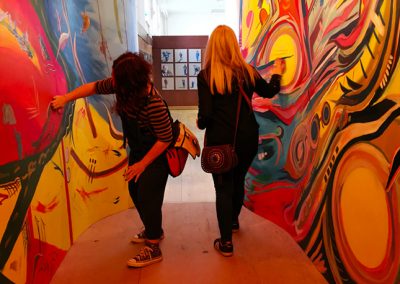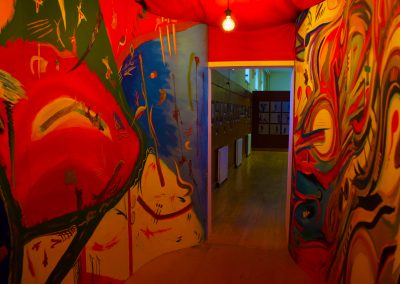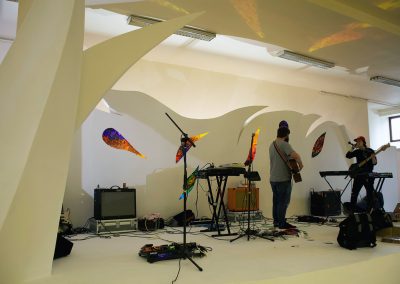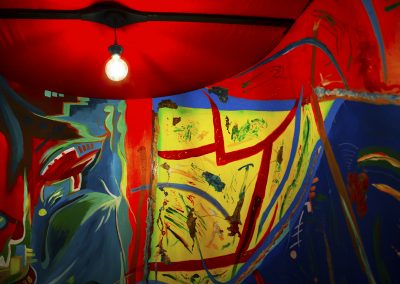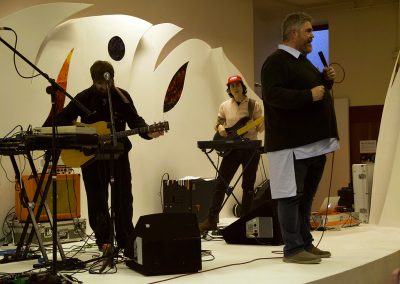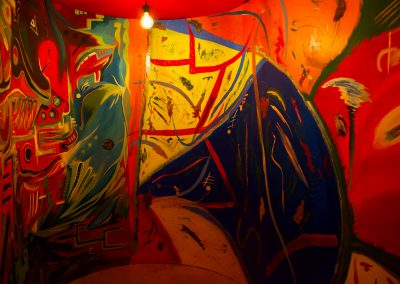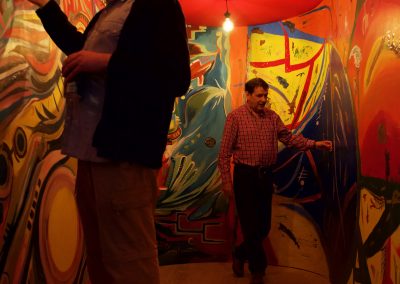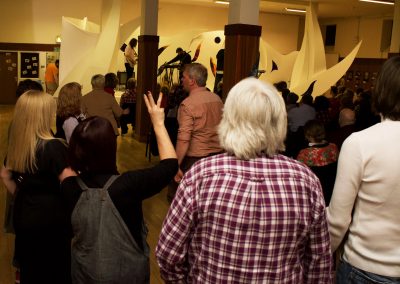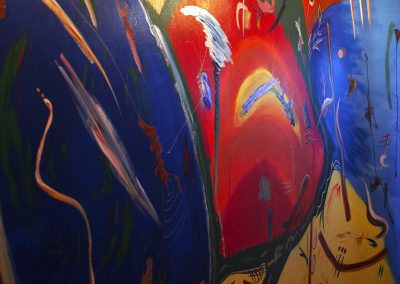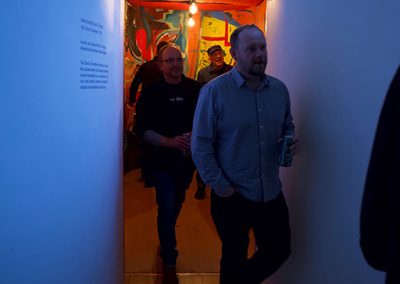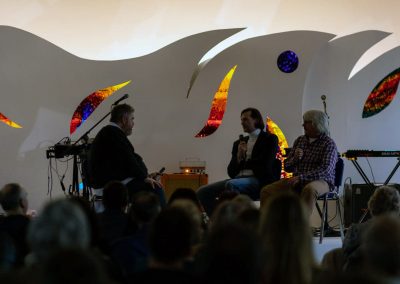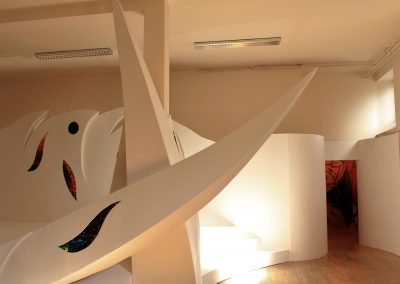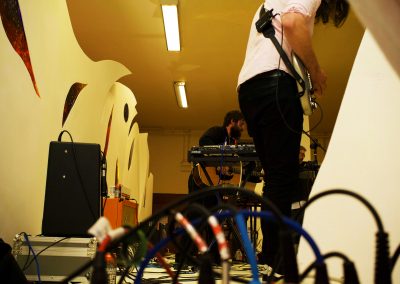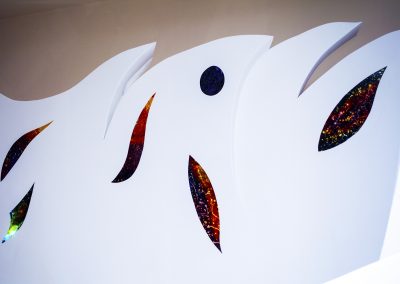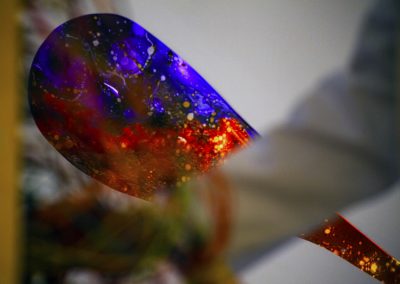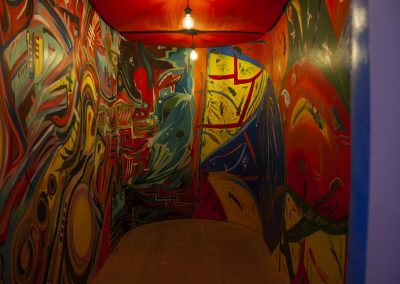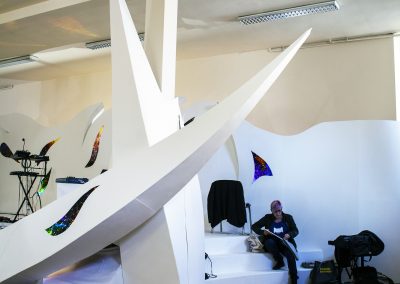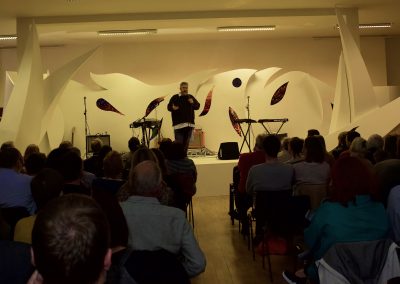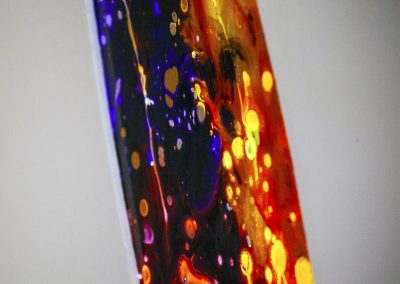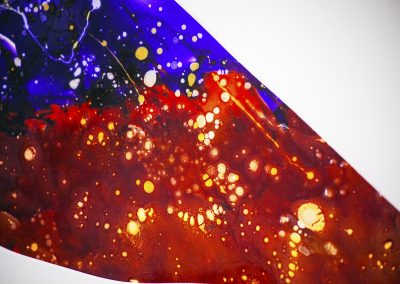SKELF: Featuring The Sonic Chamber
Introduction
In the autumn of 2018 Mark Small and Carl E Smyth were approached by the committee of the Cupar Arts festival to develop ideas for an artwork to
be constructed within the Corn Exchange building at the center of the Fife market town Cupar. As contemporary art practitioners who both trained
at Duncan of Jordanstone College of Art & Design in Dundee they were aware of each other’s practice and committed to the idea of a collaboration
in this project. The process began by taking basic measurements and discussing how Small’s glass art might fuse with Smyth’s sculptural construction
ability. Both had already worked on this theme for a proposal to build an outdoor temporary performance area, a prominent feature of the scale model
being elongated spikes, mimicking or referring to the spires that appear around Cupar. The discourse between these reckless spikes and the eminence
of state and church architectural forms was already fermenting particularly when Small’s painted glass panels were inserted and illuminated. As a seed
of intention, the artists were agreed that this new structure would be non-conformist, beautiful but difficult, arresting but enticing. The whiteness of
art gallery walls was to be wrapped over and around a series of compound curved timber structures. Imbedded in the structure were colourful glass
interludes, undulating like cosmic specks darting across the eye. The framing of the glass directly related to the shapes in the overall structure, a playful
composition encouraging the viewer to focus and move through the work. The lower hall in the Corn Exchange building where the exhibition and events
were to take place is dominated by the rationale of perpendicular lines. It is surrounded by vertical veneer patterning on the wall surfaces and broken
up by pillars supporting a theatre hall above. The artwork was always intended to interrupt the linear aspect of the space. Creating compound curves in
timber is a difficult process but it was early on in the build that the artists understood the essential need to break up the lines with these forms.
The concept of interruption became a core aspect of the work. This gave rise to the work’s title. A statement for the work was written at this time and
became a creative delta point which anchored the physical and creative process of delivering the artwork. Little is completely confirmed in delving into
the creative process of creating with timber, glass and paint, experiential knowledge informs but the intrinsic properties of materials create challenges.
Undefined desires for the physical outcome are hard won. The artists agreed on a structure in model form and realised a sculptural performance platform
which harnessed back-lit painted glass giving an ecclesiastical accent radiating on the ceiling, and a dominating collection of sweeping curved forms
intersecting the space. The performers who took to the stage all commented on the specialness of their surroundings. In exercising their talent, they
activated the sculpture. The sweeping steps to the stage were an invitation both to the performers and inquisitive children who visited the exhibition.
The inclusion of the Sonic Chamber became a complimentary project connected to SKELF and explained later in this text. The entire project was well
planned and tested prior to the install which took four days prior to the event.

SKELF
Toughened Glass, Timber, Selected Paints.
In seeking new knowledge, we stumble into moments of discovery. This requires an interruption to our existing field of what is known and understood.
It also requires an openness to experiencing a redrawing or a tearing up of the map we have followed. The moralistic dictates of dominant cultural and
educational systems serve to eliminate the wonder we have as children. We become transfixed in paradigms of profit and illusions of acquisition at the
expense of truth and growth on a personal and societal level. We are intitled by birth to fully explore and question the reality we experience. In blindly
following the creed, customs and traditions of the society to which we belong we are cooperating in the mass inoculation of our senses by those who
seek to control us. The dis-ease we are left with carries on through generations. A re-education of the being will return a power over the mind. This is
sometimes facilitated by a sharp shock to the system, alternatively it need only be a little scratch.

THE SONIC CHAMBER
Early in the design process both artists visited the Corn Exchange building in Cupar. They were there to assess the constraints and opportunities of the
physical space, how it might inform and inhibit the possibilities of creating SKELF. At the back wall of the designated area was a store room packed with
chairs and tables. This space was cleared to find a roomy compact rectangle with good height. They made floor plans with detailed measurements
understanding that this space might be inhabited by a further development of SKELF, an additional offshoot of the original concept connected to, and in
dialogue with the sculpture/performance area. The space was enclosed, separate from the main hall. This starting point indicated to both artists that an
intimacy with the audience could be experienced here, a space for a special kind of experience where individuals or small groups might enter a changing
space.
The design concept was borne out of many conversations. Smyth, having previous understanding of enclosures featuring in his practice, suggested a
flow in the design, with curved walls drawing the audience in and around the work. Small introduced the possibility of interactivity, with a previous
knowledge of electronic devices featuring in his work. Both agreed that crossing boundaries must be essential to the experience. They wanted to explore
taboo of touching artwork, that strange form of repression experienced in the sanctity of white wall galleries throughout the world. That the audience
might come and touch paintings, and that that touch might trigger another sensory experience grew into the concept for The Sonic Chamber. The artists
made a list of community groups in the locality, some of whom might be described as on the periphery of everyday society, some of whom may not
interact with ‘art’, with the intention of recording their voices and to imbed these elements into the experience.
The completed work exhibited a rich warm colour radiated on the white curved entrance which constricted and then opened up into a storm of bright
paint inside. Both artists had divided the panels and worked on them separately, then after some time they overworked each other’s work. The white
waves and intersecting compound curved structures of SKELF were already indicating some anarchy to the white gallery wall experience. The Sonic
Chamber was a further statement where immersed in swirls of colour were 24 hidden electronic sensors, triggered by touching and feeling the artwork
on the curved walls. The sounds emitted from a secret source in the ceiling were professionally mixed to include the group recordings with ambient
sounds from the community, birdsong, traffic, children’s laughter, the flowing river, and church bells.

